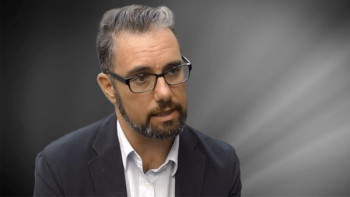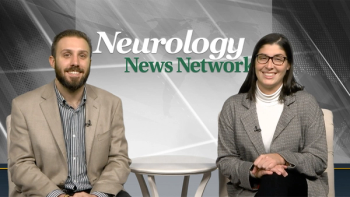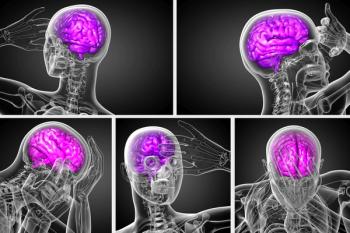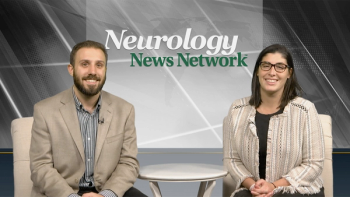
The neurocritical care fellow at Washington University School of Medicine in St. Louis shared his experiences modeling subcortical stroke.

The neurocritical care fellow at Washington University School of Medicine in St. Louis shared his experiences modeling subcortical stroke.

The medical director of the UCSF Multiple Sclerosis Center discussed the idea behind remyelination and shared his thoughts on what the best shot at developing a therapy might be.

The director of neuroimmunology at Johns Hopkins shared his thoughts on why neurofilament light is being developed as a biomarker for MS.

The Anne Parrish Titzell Professor of Neurology and Neuroscience at Weill Cornell Medicine’s Feil Family Brain and Mind Research Institute spoke about the cost the condition has for patients and their families.

Neurology News Network for the week of November 10, 2018.

The director of neuroimmunology at Johns Hopkins shared his insight into the validation of neurofilament light as a biomarker for multiple sclerosis.

The professor emeritus of psychiatry at the University of Pennsylvania’s Perelman School of Medicine discussed the imperative need for physicians to recognize tardive dyskinesia.

Recent work demonstrates that the anterior part of the hypothalamus is enlarged in cluster headache.

Tracking mandibular movements is a useful tool when measuring the efficacy of oral appliance therapy in obstructive sleep apnea.

The assistant professor of neurology at Weill Cornell Medicine shared the findings from a recent study that suggested a heightened risk of stroke may linger up to 3 months after myocardial infarction.

Could big data, combined with a biomarker, provide beneficial information for physicians treating multiple sclerosis?

The professor of neurology at Virginia Commonwealth University discussed all the progress that’s been made in the space and shared her thoughts on the advances.

The professor emeritus of psychiatry at the University of Pennsylvania’s Perelman School of Medicine spoke about the condition and the available therapies, as well as some of the needs that remain unmet.

Researchers found a link between atrial fibrillation and an increased risk of dementia and concluded that anticoagulants could help decrease that risk.

The associate professor of neurology and neuroscience at Weill Cornell Medicine spoke about the history of cell therapies for Parkinson disease and how it’s informing current work.

Cognitive complaints remain a major issue for patients with epilepsy, leading the epileptologist at the University of Pennsylvania to share her insight into addressing them.

The Global Medical Lead for Migraine and Headache at Teva Pharmaceuticals provided insight into how fremanezumab has helped to improve these facets of the condition.

The president of the ANA offered his perspective on these novel genetic therapies, as well as other a few other areas of interest.

Could 20 years of treatment for migraine have prompted a spontaneous absence of speech after this patient stopped taking her medication?

The professor of psychiatry and neuroscience at the Icahn School of Medicine at Mount Sinai spoke about new study findings that suggest antidiabetic therapy could reduce Alzheimer genetic expression.

The neurologist discussed an analysis of findings suggesting that opiate agonists may have a role in the treatment of narcolepsy.

The clinical professor in pediatric neurology and director of regional neurology services at Children's Hospital Colorado shared her thoughts on why epilepsy is the perfect paradigm to implement telemedicine.

Neurology News Network for the week of November 3, 2018.

In clinical trials, differences in the use of cholinesterase inhibitors and memantine between treatment and placebo groups may lead to the conclusion that a treatment is effective when it is not, or vice versa.

This is the first oral film formulation of clobazam approved, highlighting the challenge of medication administration in patients with LGS, who often struggle due to physical, behavioral, or cognitive impacts.

The neurologist from Cleveland Clinic discussed the challenges of treating progressive MS, and shared his clinical experience with ibudilast.

Although treatment needs to be assessed in a larger trial, it also showed improvements in 2 measurements of functional ability.

The Pediatric Movement Disorders Neurologist at UT Southwestern recommends that when encountering a patient with a movement disorder to organize your thought process in 3 steps.

The compromised microvascular and insulin receptor signaling pathways seen in Alzheimer disease have been shown to be reduced or normalized by exposure to antidiabetic therapies.

The medical director of clinical development at Biogen spoke about the current use of the biomarker and the steps being taken clinically validate it.